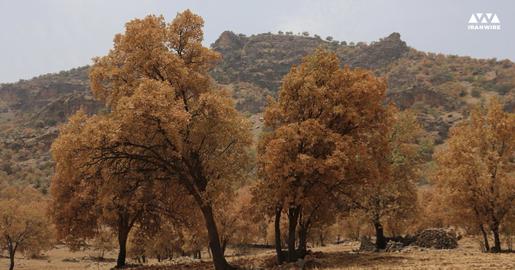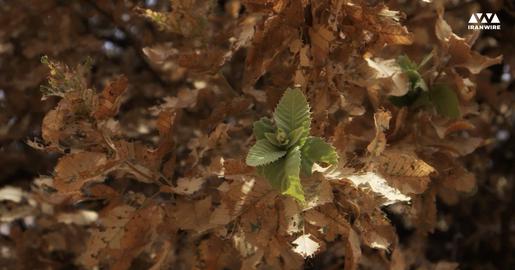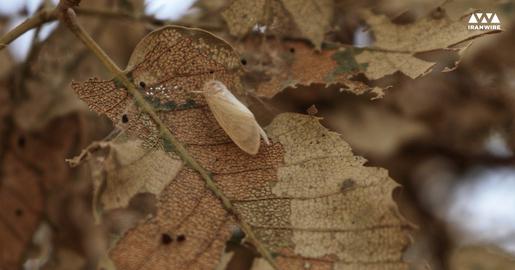By Vahid Mirzaei, citizen journalist
The oak processionary moth has inflicted significant damage on the oak forests in Dena city within Kohgiluyeh and Boyer-Ahmad province.
Known as a prominent threat to Iran's oak trees, especially those in the Zagros forests, these moths cause extensive harm by feeding on oak buds and leaves.
IranWire photographer Vahid Mirzaei has captured exclusive photos that vividly depict the devastation wrought by this pest in the Zagros region.
The life cycle of the oak processionary moth includes seven egg-laying stages, beginning in March and peaking in late May and June.
While the presence of this pest in Iranian forests, particularly in the Zagros, is not new, its recent proliferation represents a grave and unprecedented crisis.
The outbreak of this pest in the Zagros oak forests dates back to 2021, with approximately 20,000 hectares in Dena city, part of the Dena protected area, being affected.
The pest is primarily categorized into two types: the oak bud-eating moth and the oak leaf-eating moth.
The former, characterized by single-generation reproduction, leads to reduced seed production, stunted tree growth, smaller leaves, diminished photosynthetic capacity, and eventual oak tree desiccation.
Although the bud-eating moth pest, with its single-generation reproduction, is relatively easier to control compared to leaf-eating pests, governmental negligence and apathy towards ecosystem and natural resource preservation—increasingly evident in recent years—threaten the premature demise of the Zagros region.
Civil activists interviewed by IranWire's citizen reporter have criticized relevant institutions, particularly the Forestry and Natural Resources Organization and the Environmental Protection Organization, for failing to prioritize measures to control this pest.
Environmental experts and activists advocate for ecological solutions, adequate budget allocations, empowerment, and monitoring—actions largely ignored by relevant institutions.
In addition to deliberate fires, the cycle of deterioration in Zagros oak forests has been exacerbated by pests such as the oak leaf-eating moth and the wood-eating beetle.
Local environmental activists have revealed to IranWire's citizen reporter that in recent years, bud-eating and leaf-eating butterflies have ravaged more than 100,000 hectares of oak forests in South Zagros.
According to an environmental activist from the Zagros region, the Forestry and Natural Resources Organization's use of BT poison to combat the oak processionary moth is both incorrect and ill-timed.
This method of pest control has faced strong opposition from forest experts and environmental activists.
The BT solution, banned by the European Union for tree application, is only permissible in limited cases.
Activists stress that if the BT solution is to have any effect, it should be applied during the early stages of egg-laying, typically in March.
However, in recent years, spraying has begun during the peak outbreak period in late May and June, yielding counterproductive results.
This mismanagement has been likened to administering a remedy after the harm has already been done.
Reports from reliable sources indicate that oak forests in Rostam city, located in the western part of Fars province, and Beshet city, in the eastern part of Kohgiluyeh and Boyer Ahmad province, have also fallen victim to the oak processionary moth.
The extent of the damage caused by this pest has yet to be fully assessed.
Unlike the oak processionary moth, which thrives in colder regions, the oak leaf-eating moth is specific to tropical areas.
In recent years, it has plagued tropical regions in South Zagros, including Beshet, Rostam, and Norabad Mamasani.
This pest feeds on oak leaves, resulting in the complete destruction of tree foliage during spring.
As a result, affected areas experience an early start of yellowing and shedding of leaves, resembling an untimely transition into autumn.

































comments